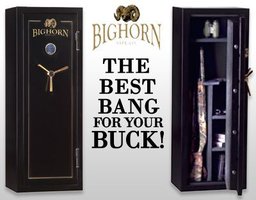- Joined
- Apr 24, 2005
- Messages
- 47,602
- Likes
- 33,714
I bought a Champion Triumph 30 from them. Delivered and installed. It's the most expensive firearms-related thing I've ever purchased. But man is it a tank. 900 lbs, lagged to the floor, and a great fire-resistant rating. Breaking into it supposedly takes hours and a professional with the right tools.
This is absolute nonsense - although I would also congratulate you on making a good investment in the safety of your collection.
The Triumph is a decent gun safe, but it is a 10 gauge gun safe, not a TL rated safe. It bears a RSC (Residential Security Container) rating which is a safespeak for "glorified tin can". The side or rear door of this safe can be opened in a very short period of time using a grit blade on a circular saw (use a corded model; cordless may not quite do it; keep a fire extinguisher handy and wear hearing protection), or a cutting tip on an Oxy Aceteleyne torch (don't forget the welding mask). If you own a metal cutting saw, or cutting torch, it is best practice to store the blades/tips inside the safe. It really sucks to get broken into with your own tools.
The unit described is a very good home safe, and will give you one, maybe two nines of protection (stopping 90% or 99% of residential burgulars), but it is ridiculous to say that it would take "hours and a professional with the right tools" for forced entry.
Even the top of line Champion Crown safe (7 gauge, 3/16") is not immune from this sort of attack - it just takes longer. Ever wonder why the gun safe companies that publish videos of big guys wailing on their safes with pickaxes and sledgehammers never video a nerd with a metal cutting saw opening the side door?
To put things in perspective, the UL requirement for a TL30 safe is "not able to make a 4" opening, or open the door in less than 30 minutes using tools that one person can carry to the job". Even the TL30 rating does not include protection against a torch job (you need a TRTL rating for that).
If you go to a TL 30 rated safe you are talking units of tons for weight, and units of thousands $ (or even tens of thousands $) for the safe cost.
The guys at Eastern Security know guns safes pretty well, but are not real "safe men". I doubt they have a single SAVTA member on staff, and from what I could tell, their staff doesn't do advanced drill or manipulation jobs other than using their ITL auto dialer. (which finds mechanical combinations by exhaustive enumeration rather than analysis like the Mas Hamilton Soft Drill does).
Last edited:

